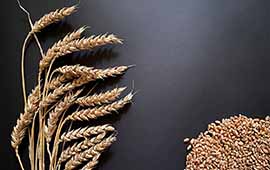Wheat is one of the most popular in Europe.
This culture is used for making flour, making pasta and confectionery, as well as making beer, vodka and whiskey. In addition, this crop in fodder form is used as feed for farm animals as a rich source of protein and useful microelements. Despite the growing popularity of wheat substitutes, it still remains the most demanded in the EU. At the same time, in Europe itself, the cultivation of this crop is not so active, and therefore the EU countries are forced to buy wheat in other countries.
Europe’s place in the world wheat growing market
China is recognized as the most productive wheat supplier in the world. The final stocks of this culture in the Celestial Empire are about 130 million tons. In addition, India and the United States are among the top three in wheat cultivation. At the same time, European countries are significantly lagging behind in the production of this crop – for example, the same France is only in fifth place in the list of producing countries. But in terms of the yield of this crop, Europe surpasses its competitors – it’s all about the temperate climate inherent in many EU countries. In such a climate, wheat grows actively and turns out to be of better quality. This is what makes Belgium, Ireland, the Netherlands, the United Kingdom and Germany the leaders in the production of quality grain. In addition, Europe is actively engaged in processing this crop, overtaking other countries.
Growing features
Wheat is a rather demanding crop in terms of growing conditions. Before harvesting, they go through three stages – the preparatory phase, the formation phase and the product formation phase. At these stages, the culture needs special conditions, as well as fertilizers. By the way, the supply of wheat to the EU has its own characteristics just on the basis of these conditions – a crop is prohibited for purchase, during the cultivation of which feedings dangerous to human health were used. In addition, the crop must be consistent in moisture, specific gravity, protein content, protein quality, infestation / odor / condition, Hagberg falling number, grain hardness and grain impurities. These indicators are necessary in order to obtain flour suitable for human consumption from grain. The rest of the types of this grain can be used in industry or agriculture, where the quality requirements are slightly lower. Nevertheless, despite such a wide range of requirements for grain quality, a Ukrainian product, as a rule, receives all the necessary documents for deliveries to Europe. By the way, it is Ukraine that supplies the EU with the bulk of imported wheat, since it is the closest geographic exporting country. According to statistics, more than 10.5 million tons of this crop are supplied from Ukraine annually.






